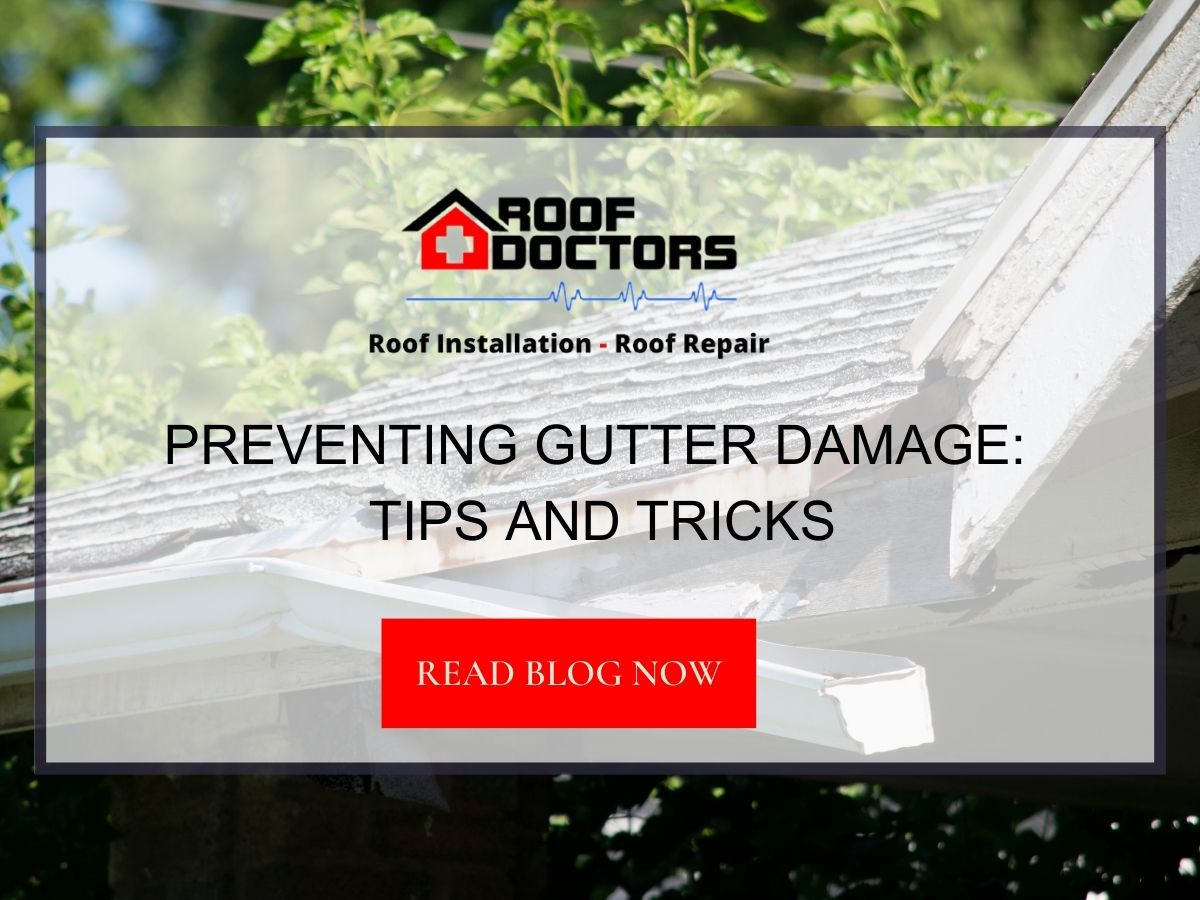Preventing gutter damage is essential as gutters play a vital role in protecting your home from water damage. They channel rainwater and melting snow away from your home’s foundation, preventing erosion, basement flooding, and other water damage.
However, gutters can get damaged or clogged over time, rendering them ineffective. Preventing gutter damage saves you from potentially costly repairs and ensures the longevity of your home’s structural integrity.
This article delves into the myriad ways to prevent gutter damage, ensuring these silent protectors remain robust and efficient throughout their lifespan. Join us as we explore ten valuable tips and tricks that every homeowner should know to preserve the integrity of their gutter system.
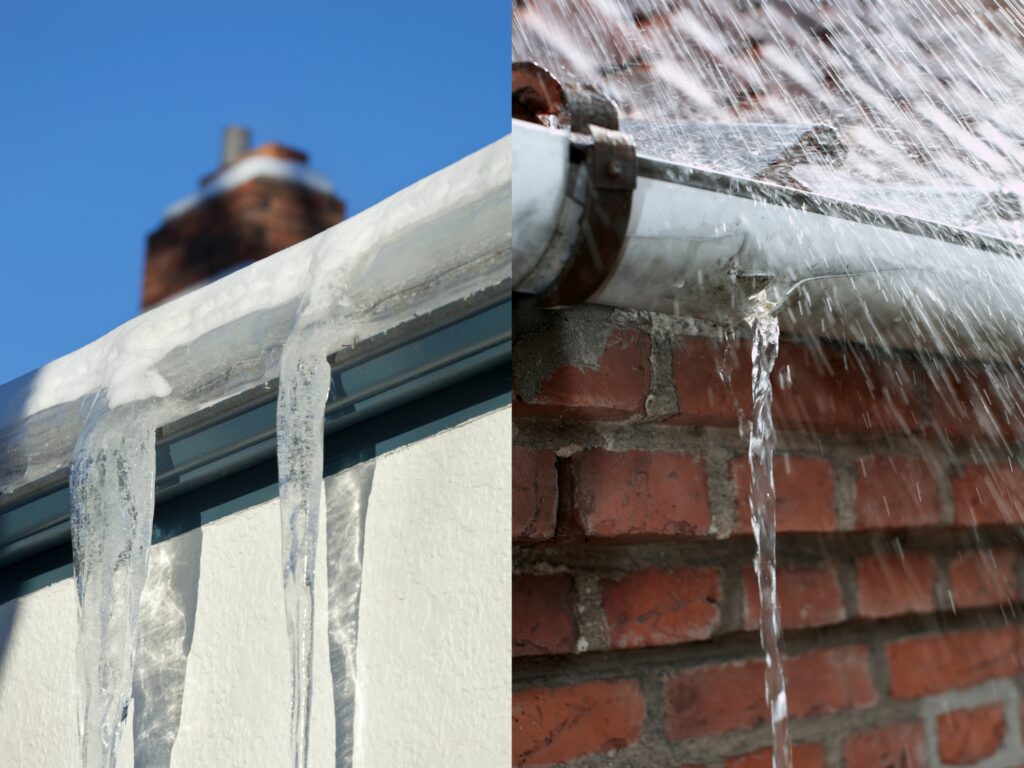
1. Regular Cleaning:
Preventing gutter damage begins with regular cleaning. By clearing debris and leaves regularly, you can ensure proper water flow and prevent clogs that can lead to gutter damage.
Gutters, though often overlooked, are the shield bearers of a home, protecting its structural integrity from the potential damage of water. The perennial challenge for these silent guardians? Clogs. Leaves, twigs, and assorted debris can quickly gather, hindering the gutter’s primary function and adding undue stress to its framework.
Clogs from leaves, twigs, and debris: These seemingly innocent natural elements combine to challenge gutters. As they accumulate:
- Weight Issue: The debris can weigh down on the gutters, especially when sodden with rain. This undue stress isn’t what gutters are designed to handle continually. Over time, the added weight can cause gutters to detach from their fixtures, sag, or, in extreme cases, collapse.
- Water Diversion: Clogged gutters can’t efficiently channel water away from the home. This can lead to water spilling over the sides, potentially damaging the home’s siding, flooding the basement, or eroding the landscape.
- Prolonged Moisture: Clogs prevent the swift exit of water, leading to prolonged moisture. This can be a precursor to mold growth, which can spread to other parts of the home.
Remember, while regular cleaning is a proactive step in ensuring the longevity of your gutters, periodic checks, especially after heavy storms, are just as essential. After all, a well-maintained gutter system is a cornerstone of a safe and healthy home.
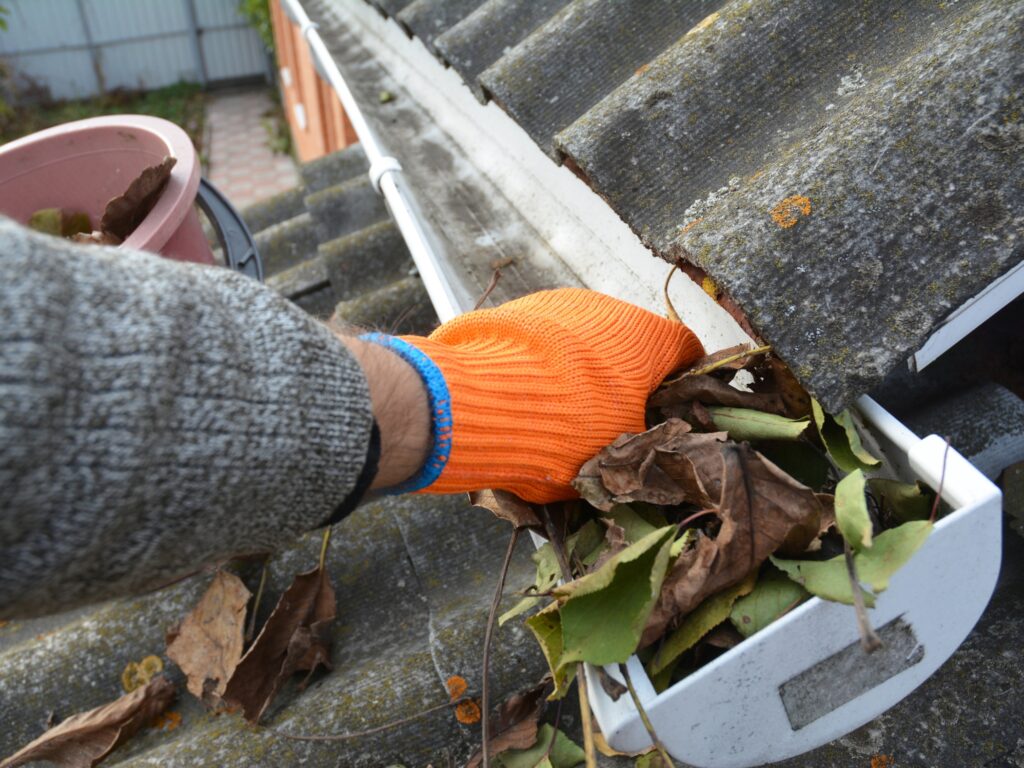
2. Install Gutter Guards:
Install gutter guards as an effective measure in preventing gutter damage. These protective screens or covers help keep debris out of your gutters, reducing the need for frequent cleaning and minimizing the risk of clogs and potential damage.
Gutter guards offer a proactive solution to minimize debris accumulation in gutters. Their primary benefits include drastically reducing maintenance frequency, preventing clogs and subsequent damages, extending the gutter’s lifespan, and aiding in pest control.
Various types of gutter guards include:
- Mesh Screens: Metal sheets with tiny holes.
- Brush Inserts: Cylindrical brushes are placed inside the gutter.
- Foam Inserts: Porous foam materials fitting directly into the gutter.
- Reverse Curve Guards: Direct water over a curve into the gutter.
- Slit Guards: Feature vertical slits or openings.
While installing gutter guards, homeowners must decide between DIY and professional installation. It’s crucial to ensure the chosen guard is compatible with the existing gutter system and made of durable materials.
Even with guards, occasional maintenance is necessary, so opt for easily removable designs for convenience. Overall, gutter guards can significantly ease gutter maintenance and enhance their efficiency.
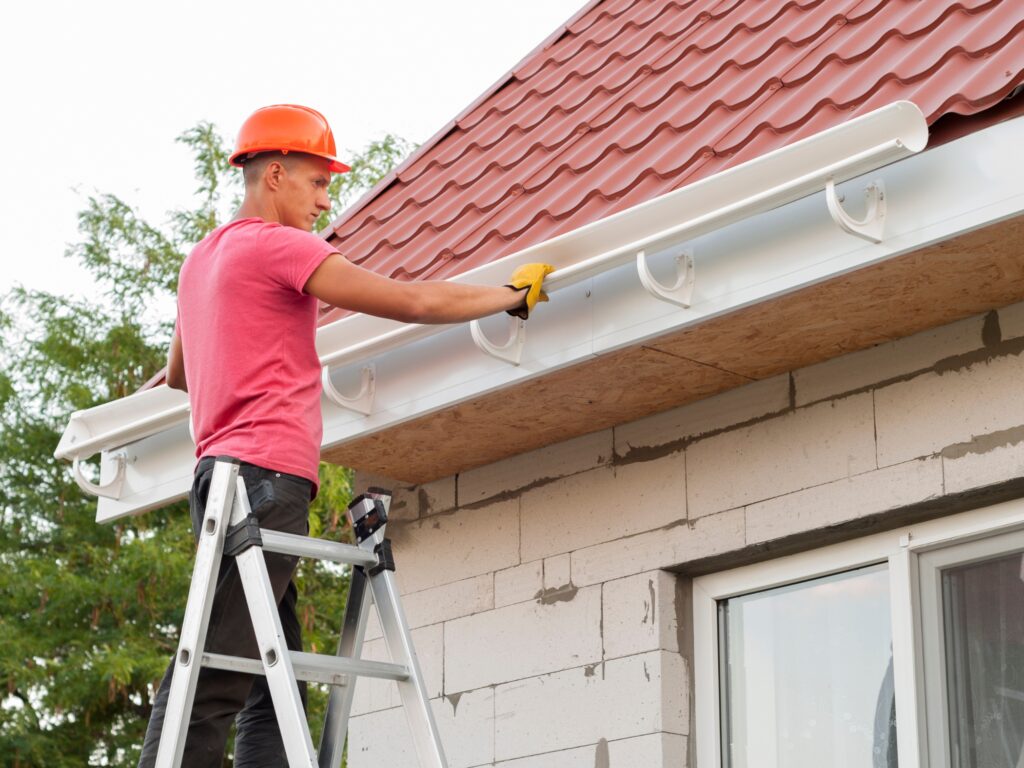
3. Check for Proper Slope:
The slope of gutters is vital for directing water towards the downspouts, preventing standing water and subsequent issues like corrosion, weight stress, and overflow. The importance of the right slope includes effective drainage, damage prevention, and avoiding overflows.
To ensure a correct slope:
- Visual Inspection: Regularly observe your gutters for signs of sagging or misalignment, especially after severe weather.
- Water Flow Test: Pour water into the gutter and observe its flow towards the downspout; pooling indicates slope issues.
- Measure and Adjust: Gutters should have a slope between 1/4 to 1/2 inch per 10 feet. Use a level for accurate measurement, and reposition hangers or brackets if adjustments are needed.
Regular maintenance should include checks for sagging, cleaning to avoid excess weight from debris, and inspections after significant weather events. Ensuring the proper slope is fundamental for gutters to protect your home effectively.
4. Regular Inspections:
Regular gutter inspections are vital for early problem detection, preventing water damage, and avoiding pest infestations. Key components of an inspection include:
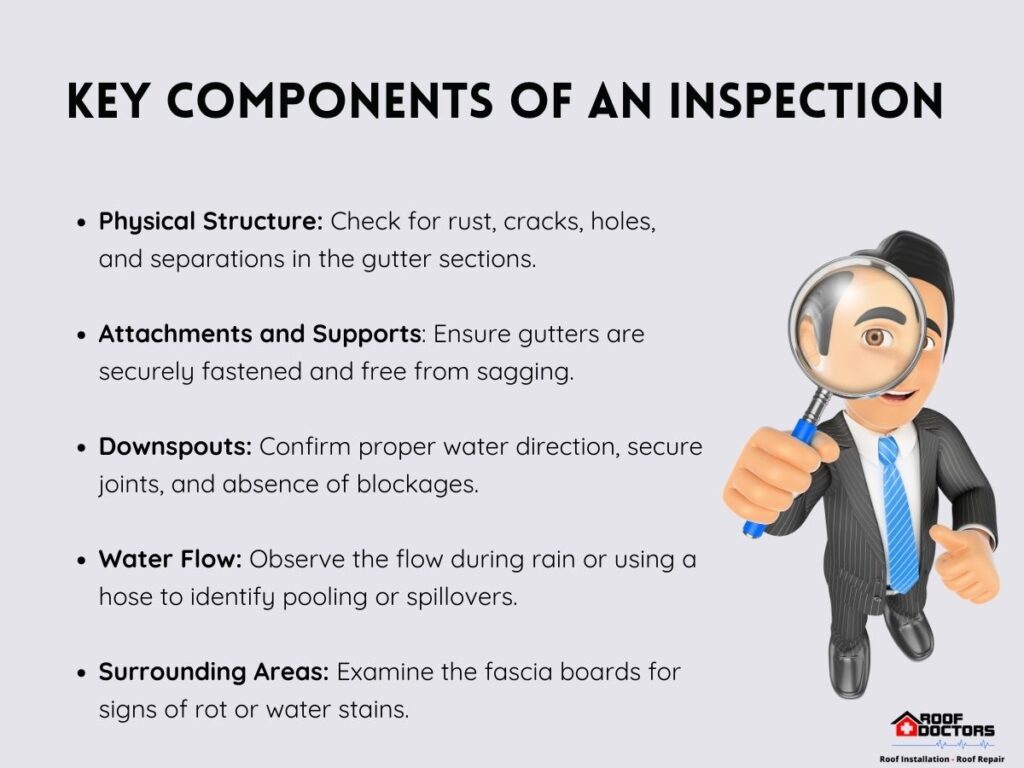
- Physical Structure: Check for rust, cracks, holes, and separations in the gutter sections.
- Attachments and Supports: Ensure gutters are securely fastened and free from sagging.
- Downspouts: Confirm proper water direction, secure joints, and absence of blockages.
- Water Flow: Observe the flow during rain or using a hose to identify pooling or spillovers.
- Surrounding Areas: Examine the fascia boards for signs of rot or water stains.
Inspections should be conducted seasonally, especially during fall and spring, after severe weather events, and in conjunction with regular gutter cleanings. Proactive inspections help maintain gutter functionality and safeguard the home.
5. Ensure Sturdy Mountings:
Sturdy mountings are essential for maintaining the structural integrity of gutters, preventing water damage, and saving on potential future repair costs. To ensure robust mountings:
- Inspect Regularly: Examine brackets, hangers, and screws for signs of wear or corrosion and replace compromised components.
- Maintain Proper Spacing: Position hangers every 2 to 3 feet, adjusting for areas with heavy snowfall.
- Choose Quality Materials: Opt for durable, rust-resistant materials like stainless steel or aluminum.
- Address Sagging: Fix any sagging sections immediately by strengthening or adding support.
- Monitor Sealants: For older mounting systems using sealants, ensure they remain intact and reapply as needed.
- Seek Professional Advice: Consult experts for guidance or potential upgrades when in doubt.
In essence, while gutters play a prominent role, the sturdy mountings ensure their optimal performance and longevity.
6. Protect Downspouts:
Protect downspouts by extending them away from your foundation to prevent gutter damage. Properly directed downspouts channel water away from your home, safeguarding your foundation and preventing erosion and water damage.
Downspouts are the arteries of the gutter system, ensuring that water is channeled away from the home’s foundation effectively. Just as gutters need protection and maintenance, downspouts, too, require attention to ensure they function optimally. Let’s explore why and how to ensure downspouts remain in top shape.
Here are some of the significance of protecting downspouts:
- Foundation Protection: Downspouts channel water away from the home, preventing soil erosion and potential foundation issues.
- Prevent Backups: A blocked downspout can cause water to back up, putting strain on the entire gutter system.
- Aesthetic Value: Properly functioning and clean downspouts contribute to the overall aesthetic of a home.
By maintaining and protecting downspouts, homeowners can enhance their home’s water management system, ensuring both aesthetics and structural well-being.
7. Ice Dam Prevention:
Ice dams, formed by icicles and ice ridges on roof edges, can cause water backups and potential damage to roofs and gutter systems. Effective prevention measures include:
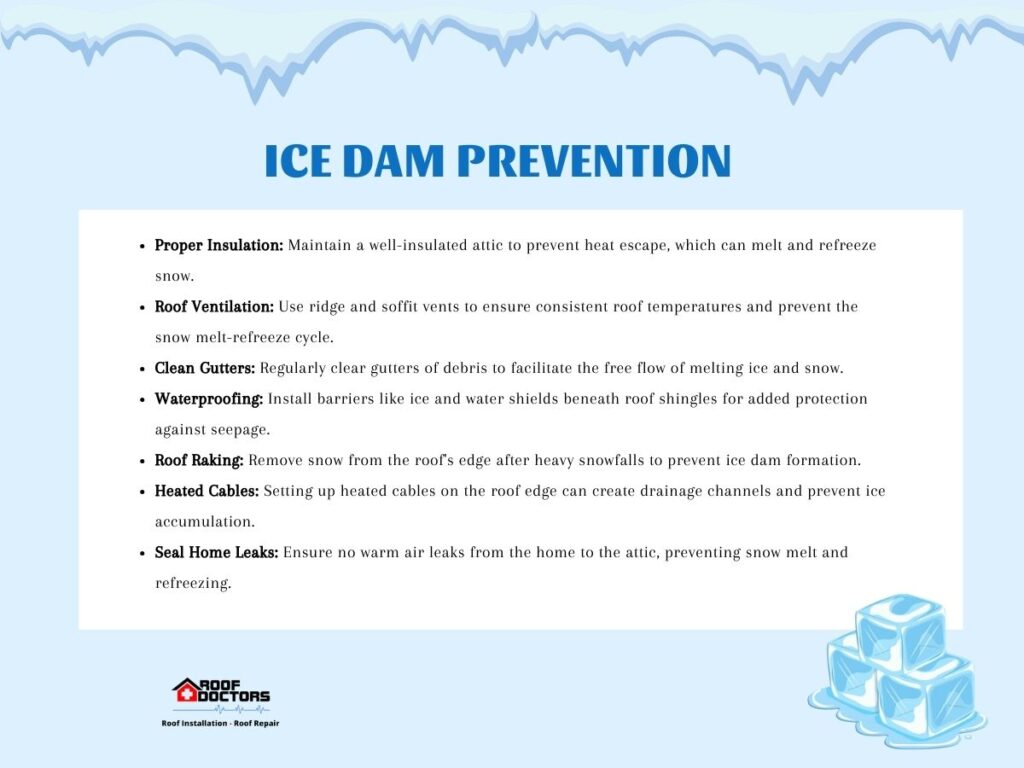
- Proper Insulation: Maintain a well-insulated attic to prevent heat escape, which can melt and refreeze snow.
- Roof Ventilation: Use ridge and soffit vents to ensure consistent roof temperatures and prevent the snow melt-refreeze cycle.
- Clean Gutters: Regularly clear gutters of debris to facilitate the free flow of melting ice and snow.
- Waterproofing: Install barriers like ice and water shields beneath roof shingles for added protection against seepage.
- Roof Raking: Remove snow from the roof’s edge after heavy snowfalls to prevent ice dam formation.
- Heated Cables: Setting up heated cables on the roof edge can create drainage channels and prevent ice accumulation.
- Seal Home Leaks: Ensure no warm air leaks from the home to the attic, preventing snow melt and refreezing.
Regular professional inspections and potential upgrades to roofing materials and insulation can further fortify homes against ice dams.
8. Address Overflowing Issues:
Overflowing gutters can pose significant threats to a home, from structural damage to compromised landscaping. The primary culprits behind such overflows often include debris clogs, incorrect gutter slopes, undersized downspouts, and physical damage to the gutters themselves.
To mitigate these issues, homeowners should prioritize regular gutter cleaning, particularly after heavy storms or during high leaf-drop seasons. Additionally, ensuring that gutters maintain a slight yet consistent slope towards downspouts can facilitate more effective water drainage.
Enlarging downspouts or increasing their number in areas prone to intense rainfall can prove beneficial. Lastly, regular inspections to identify and repair any cracks, holes, or separations in the gutters are essential. Appropriate sealants or patches can help maintain the gutter’s integrity and prevent water spillage.
Homeowners can ensure a long-lasting and efficient drainage system by taking these proactive measures.
9. Professional Inspection:
Engaging in professional gutter inspection offers homeowners a comprehensive and nuanced evaluation of their home’s drainage system. These experts bring a depth of experience that allows them to spot issues that might go unnoticed in DIY checks.
Key benefits of such inspections include:
- A meticulous assessment of the gutter’s condition.
- Ensuring safety during the evaluation.
- Expert advice on maintenance and upgrades.
- Potential cost savings from early problem detection.
- Overall peace of mind for homeowners.
During an inspection, professionals typically assess the gutter’s material, verify its slope and alignment, inspect seams and joints for potential leaks, evaluate downspouts, check the state of gutter guards, and conduct a water flow test to gauge real-time performance.
Periodic professional evaluations complement regular self-maintenance, ensuring a durable and efficient gutter system.
10. Trees and Foliage:
While trees and foliage enhance a property’s aesthetic and environmental value, they can pose challenges for gutter systems. Deciduous trees shed leaves, twigs, and sometimes branches, which can clog and damage gutters. Evergreens drop pine needles that are notoriously difficult to clean, and overhanging trees can promote moss and algae growth. Some decomposing leaves can even release acids that corrode metal gutters.
To manage these challenges:
- Prune overhanging branches to reduce debris.
- Install gutter guards to prevent foliage accumulation.
- Clean gutters frequently, especially during shedding seasons.
- When planting, position trees with consideration to their mature size and potential debris.
- Opt for gutter-friendly trees that shed less or have larger, easier-to-clean leaves.
- Inspect roofs periodically for debris that might slide into gutters.
Trees and foliage near your home can contribute to preventing gutter damage by shedding leaves and debris onto the roof and gutters, emphasizing the need for regular cleaning and maintenance.
Lastly, consulting with an arborist can offer insights into tree health and proper pruning, ensuring the well-being of both trees and gutters. Balancing the beauty of nature with proactive maintenance ensures the durability and efficiency of a home’s drainage system.
Conclusion:
Proactive maintenance of gutters is far less expensive and time-consuming than dealing with the aftermath of damaged or ineffective gutters. By integrating the above tips and tricks into your home maintenance routine, you can ensure that your gutters remain in optimal condition, safeguarding your home against potential water damage.
Whether taking a hands-on DIY approach or enlisting professional help, timely maintenance and intervention can extend the lifespan of your gutters, safeguarding your home against potential water damage. In essence, diligent gutter care is an investment in the well-being and longevity of your cherished home.

